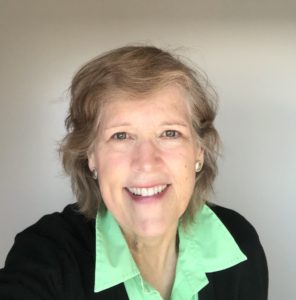By Patricia Houser
For Nature’s Sake

Patricia Houser
As we have learned to recognize the role of essential workers – people whose behind-the-scenes labor supports individual and community well-being – it’s reasonable to wonder, “Who ensures that we have clean air to breathe and water to drink, and who is, really, safeguarding the landscapes and wildlife that enable humans to survive here?”
While Mother Nature once offered those amenities for free, we now rely upon laws and organizations to restore and protect our water, air and ecosystems.
This year, two of our state’s eco-heroes were singled out for recognition by the Environmental Protection Agency. Out of 20 awards allotted to individuals and organizations across New England, the two honorees from Connecticut were Sharon Lewis, who received an individual EPA merit award for her work as executive director of the Connecticut Coalition for Environmental and Economic Justice, and Betsey C. Wingfield, who received a lifetime achievement award after 34 years at the state Department of Energy and Environmental Protection.
“Sharon Lewis embodies the best of the environmental movement,” says the glowing commendation from the EPA’s merit awards program. During the past year Lewis has mobilized to limit the expansion of a landfill that has already sickened neighboring communities and lobbied for better air quality in schools, school bus electrification and clean energy.
She has done this in part by bringing to the conversation powerful insights into ongoing, disproportionate, exposure of Black, indigenous, and people of color (commonly called BIPOC) populations to pollution in our state, as well as a need to recognize the legacy and persistence of racism in land use decision-making. In a talk to a group of college students, which was one of over 100 online virtual appearances she has made in recent years, Lewis emphasized that the ultimate goal of environmental justice is not to equalize pollution but eliminate harms completely.
Wingfield, deputy commissioner of DEEP for the last three years, has been “in the room where it happened” (to quote the Broadway show Hamilton) for over three decades of key policy decisions and actions to restore and protect natural resources in our state. The EPA notes that she has “found equitable solutions to environmental challenges, relying on science, innovation, and partnerships,” including the landmark nitrogen trading program for wastewater treatment plants that has improved the quality of Long Island Sound, and the recently established state water plan. The EPA further described her work on brownfield and superfund clean ups and other initiatives that she either spearheaded or contributed to, drawing upon her insights and abilities as a scientist and administrator.
Wingfield retired earlier this year, and now, reflecting on the lifetime achievement award, feels “honored and humbled that my colleagues at DEEP nominated me and that the EPA selected me…I feel incredibly grateful to have been able to spend three plus decades working on behalf of Connecticut environment and its citizens. I am born and bred in Connecticut; its resources and people and places are really important to me.”
When I asked these honorees for their ideas about addressing environmental challenges in the new year, they both referred to the importance of public education.
“We’ve done a lot…through regulation…A lot of our challenges today are about collective individual actions,” she said, adding, “I think we need to give people information so that they understand what their part is.”
An informed public would reflect on how they are managing their organics, for example.
“Are they recycling to the full extent that they can? Are they thinking about their carbon footprint – and what they can do to reduce that?” she asked.
When people figure out how to reduce their energy usage and their gas usage, it can help people economically too.
“A lot of things that are win for the environment are a win for the individual,” Wingfield said.
Lewis’s first thought also was to encourage people to reduce their waste, endorsing slogans like, “practice zero waste,” and “reduce, reuse, refuse, and then recycle.”
“Try to keep stuff out of the waste stream,” she said. “Think about how much we buy, how much we waste – reconfigure your brain as far as ‘Do we really need this?’ or ‘How can I use this three or four times before I throw it away?’”
The other piece of public awareness and policy that must accompany any effort going forward, Lewis said, is a matter of “people using their privilege, white or black but mostly white, to make sure equity and justice are infused into everything that’s done.”
That means, regardless of the setting, calling out a person for racist or discriminatory words and deeds. And it means including impacted communities at the table when land use decisions are made.
“It’s not just about pollution,” Lewis said. “Urban planners, architects, zoning boards, financial institutions, housing people, energy and more, stakeholders should consider environmental justice in every decision they make beginning with looking around the table. If the marginalized and disenfranchised are not there, cancel the meeting. For too long, BIPOC participants have been added to the decision-making tables late, as an afterthought. Why is this still happening?”
Connecticut is an environmentally healthier place because of people like Lewis and Wingfield. They also remind us, among other things, that pollution, economics and equity are inseparable, that we have more work ahead, and that in the new year we each have a role to play in reducing waste and carbon footprints and shaping community conversations.
Patricia Houser, PhD, AICP, shares her exploration of local and regional environmental issues in this column as a member of the nonpartisan Milford Environmental Concerns Coalition.